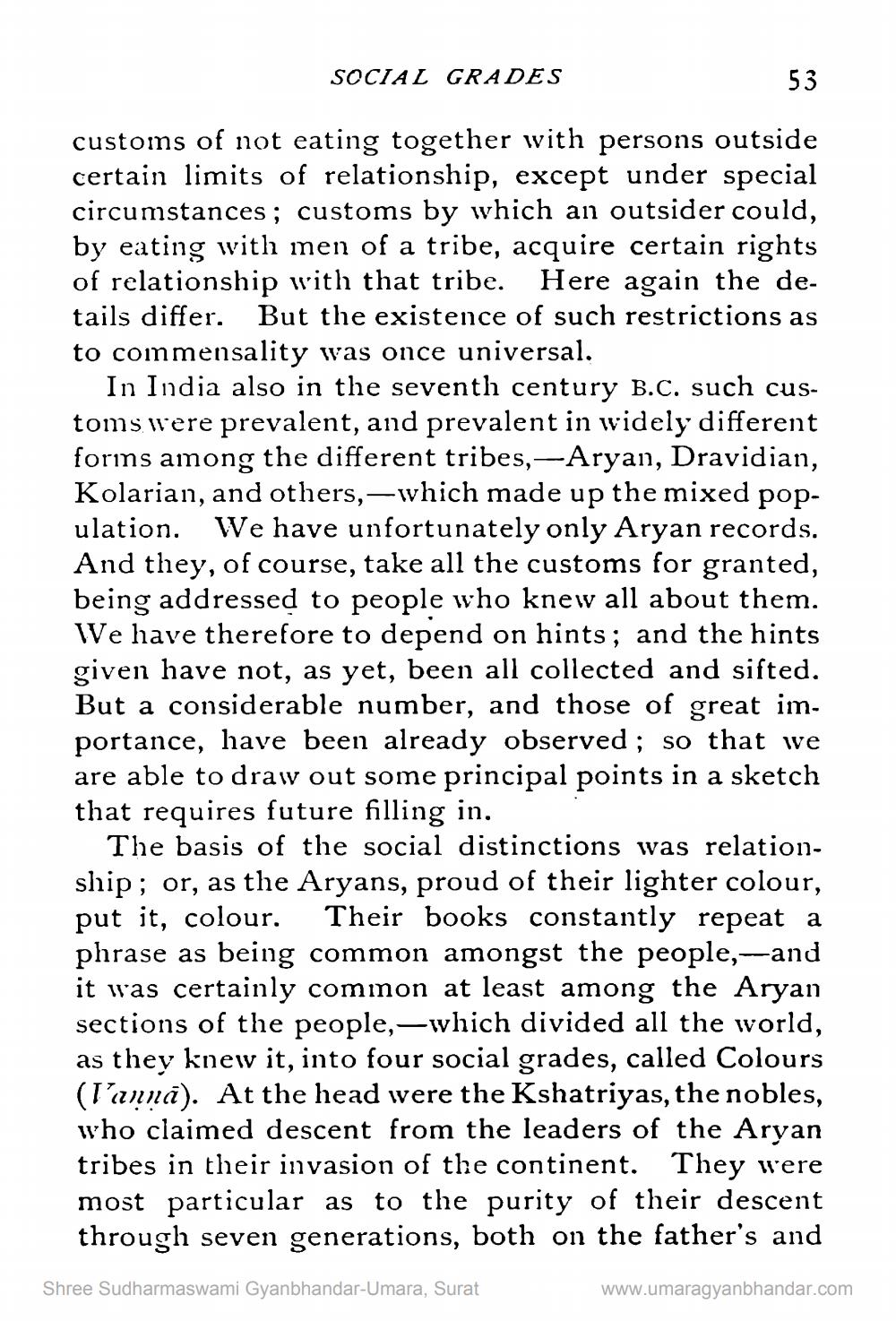________________
SOCIAL GRADES
53
customs of not eating together with persons outside certain limits of relationship, except under special circumstances; customs by which an outsider could, by eating with men of a tribe, acquire certain rights of relationship with that tribe. Here again the details differ. But the existence of such restrictions as to coinmensality was once universal.
In India also in the seventh century b.C. such customs were prevalent, and prevalent in widely different forins among the different tribes,—Aryan, Dravidian, Kolarian, and others,—which made up the mixed population. We have unfortunately only Aryan records. And they, of course, take all the customs for granted, being addressed to people who knew all about them. We have therefore to depend on hints; and the hints given have not, as yet, been all collected and sifted. But a considerable number, and those of great importance, have been already observed; so that we are able to draw out some principal points in a sketch that requires future filling in.
The basis of the social distinctions was relationship; or, as the Aryans, proud of their lighter colour, put it, colour. Their books constantly repeat a phrase as being common amongst the people,--and it was certainly common at least among the Aryan sections of the people, —which divided all the world, as they knew it, into four social grades, called Colours (I'anni). At the head were the Kshatriyas, the nobles, who claimed descent from the leaders of the Aryan tribes in their invasion of the continent. They were most particular as to the purity of their descent through seven generations, both on the father's and
Shree Sudharmaswami Gyanbhandar-Umara, Surat
www.umaragyanbhandar.com




